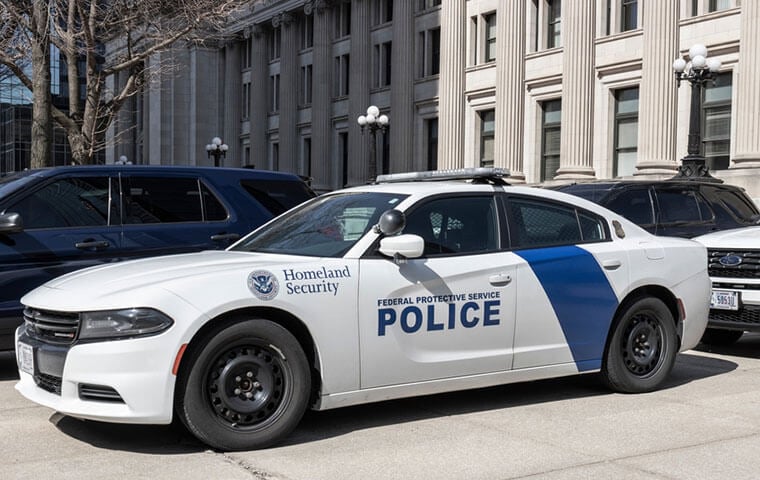 Hearing follows a report saying agencies have put in place only a “small percentage” of FPS recommendations to improve the physical security. Image: Jonathan Weiss/Shutterstock.com
By: FEDweek Staff
Hearing follows a report saying agencies have put in place only a “small percentage” of FPS recommendations to improve the physical security. Image: Jonathan Weiss/Shutterstock.com
By: FEDweek StaffA Senate committee is holding hearings this week on physical security of federal facilities, while a new executive order has added new tasks for an interagency body overseeing those policies government-wide.
Hearings before the Homeland Security and Governmental Affairs Committee will examine the work of the Federal Protective Service and the Interagency Security Committee. That follows a GAO report from earlier this year saying that agencies put in place only a “small percentage” of FPS recommendations to improve the physical security of their facilities, “raising questions about the extent to which those federal facilities and their occupants are protected.”
In that report, GAO said that over 2017-2021, more than 25,000 security recommendations were made at nearly 5,000 facilities on topics ranging from physical protections to remote monitoring. Of those, though, there was no response to 57 percent, 12 percent were rejected, 19 percent were closed without being implemented and the rest had other outcomes, including only 6 percent considered “implemented.”
The GAO report noted that while the Interagency Security Committee sets standards for physical security—taking into account factors such as the facilities’ location, existing countermeasures, and local crime statistics—implementation is left to the tenant agency, or to a local facility security committee at a site with more than one agency.
Inspector general offices of agencies including the VA and IRS also have issued recent reports raising concerns about vulnerability of facilities to intrusions and attacks for reasons including lack of security officers and broken or inoperable controls such as access card readers.
The White House meanwhile has updated policies for that committee, including a directive that it “evaluate existing security standards for federal facilities and develop a strategy to monitor the implementation of such standards to ensure compliance by agencies.”
That is to include taking “such actions as may be necessary to enhance the quality and effectiveness of security in and protection of federal facilities” including “encouraging agencies with security responsibilities to share security-related intelligence in a timely and cooperative manner;” “evaluating standards for the location of, and special security related to, child care centers in federal facilities”; “providing best practices for securing a mobile federal workforce;” and more.
Senate Eyes Vote to Pay Federal Employees Working Unpaid
Series of Bills Offered to Address Shutdown’s Impact on Employees
Public Starting to Feel Impact of Shutdown, Survey Shows
OPM Details Coverage Changes, Plan Dropouts for FEHB/PSHB in 2026
Does My FEHB/PSHB Plan Stack Up? Here’s How to Tell
2025 TSP Rollercoaster and the G Fund Merry-go-Round
See also,
TSP Takes Step toward Upcoming In-Plan Roth Conversions
5 Steps to Protect Your Federal Job During the Shutdown
Over 30K TSP Accounts Have Crossed the Million Mark in 2025

